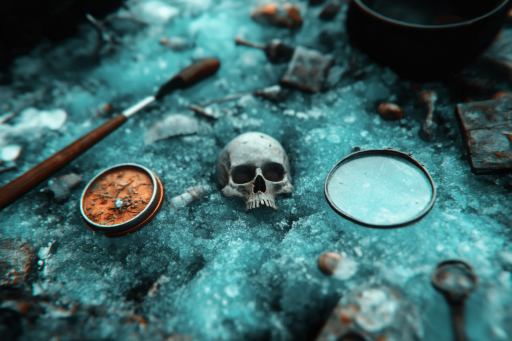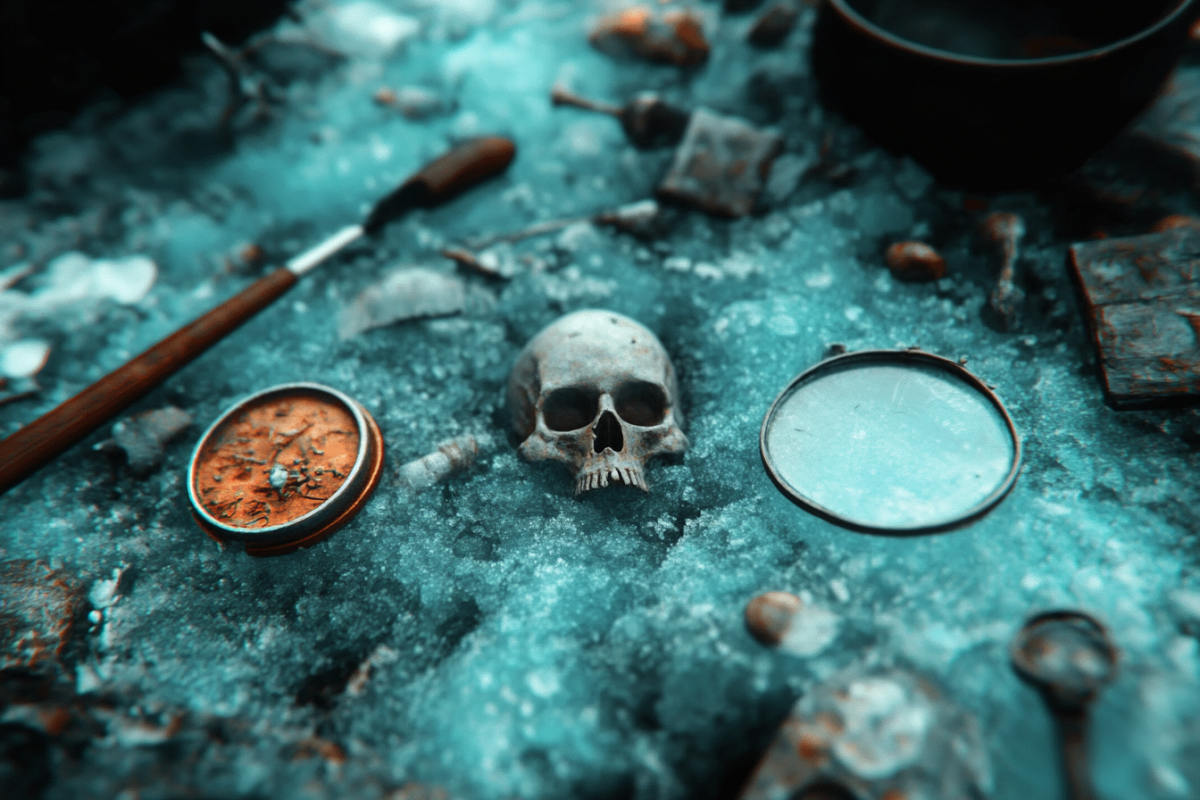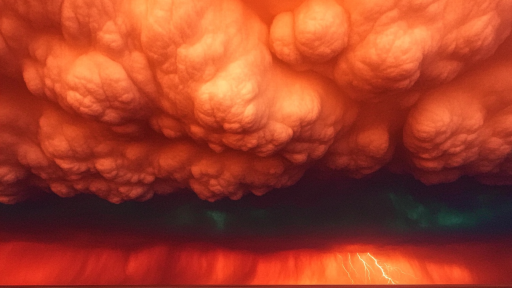
The icy depths of our planet have preserved some of the most bizarre and unexpected discoveries imaginable. From ancient creatures frozen in time to eerie remnants of forgotten civilizations, what lies beneath the ice is both chilling and fascinating. These extraordinary finds not only reveal secrets of the past but also challenge what we know about the world. Get ready to uncover some of the most mind-boggling things ever found trapped in ice.
A Mysterious Wolf Pup from the Ice Age

Deep in the permafrost of the Yukon, researchers unearthed a perfectly preserved Ice Age wolf pup. With intact fur, teeth, and even organs, this pup had been frozen in time for over 50,000 years. Scientists believe this incredible find provides insights into ancient canines and their adaptation to frigid climates. The pup’s eerie lifelike appearance makes it look like it could wake up at any moment.
Ancient Viruses Locked Away for Millennia

Hidden beneath layers of Arctic ice, scientists have discovered prehistoric viruses frozen for thousands of years. Some of these microbes date back to an era when mammoths roamed the Earth, raising concerns about potential risks if they thaw. Researchers study these ancient viruses to understand their genetic makeup and the possibility of unknown pathogens resurfacing. This chilling discovery highlights the fragile balance between past and present microbial life.
A Perfectly Preserved Ice Age Lion Cub

In the Siberian tundra, an astonishingly well-preserved cave lion cub emerged from the ice. The cub, estimated to be around 28,000 years old, still has its fur, whiskers, and even internal organs intact. This discovery sheds light on extinct lion species and their evolutionary journey. Scientists hope DNA analysis may one day lead to the cloning of these ancient predators.
A Frozen Mammoth with Liquid Blood

Siberian researchers made a shocking discovery—a woolly mammoth so well-preserved that it still had liquid blood. Found in a block of ice on a remote Arctic island, the mammoth’s remains sparked scientific curiosity about potential cloning efforts. This discovery has fueled debates about reviving extinct species using genetic engineering. The presence of liquid blood suggests that ice age mammals had unique adaptations to extreme cold.
An Enigmatic Human with an Arrow in His Back

The frozen remains of Ötzi the Iceman, a 5,300-year-old mummy found in the Alps, tell a dramatic tale of prehistoric survival. Examination revealed he was murdered—an arrowhead lodged in his shoulder and deep cuts on his hands suggest a violent end. His body, preserved by ice, provides valuable insights into ancient diets, tattoos, and early medical practices. The mystery of his final moments continues to intrigue scientists and historians alike.
A Lost Mountain Pass Filled with Viking Artifacts

When glaciers in Norway receded, they exposed a hidden Viking-era mountain pass filled with ancient relics. Archaeologists uncovered weapons, clothing, and even wooden skis used over a thousand years ago. These artifacts reveal details about ancient trade routes and survival in extreme conditions. The discovery offers a rare glimpse into the daily lives of Viking travelers navigating treacherous terrain.
A Frozen ‘Zombie’ Plant That Came Back to Life

In an unexpected twist, scientists revived a plant frozen in Siberian permafrost for over 30,000 years. The plant’s seeds, trapped beneath the ice since the Ice Age, regenerated and successfully grew new life. This discovery raises fascinating possibilities about the resilience of ancient organisms. Could other frozen species also have the potential to awaken after millennia?
A Well-Preserved Steppe Bison

Researchers uncovered an Ice Age steppe bison in the Alaskan tundra, remarkably intact with fur and muscles still visible. This discovery offers an unparalleled look at an extinct species that once roamed North America. Scientists use the find to study ancient ecosystems and compare it to modern bison populations. The eerie preservation makes it look as though it could charge at any moment.
A Frozen WWII Plane Buried Beneath a Glacier

High in the Greenland ice, a squadron of WWII fighter planes, known as the “Lost Squadron,” was discovered decades after disappearing. The aircraft, encased in thick ice, had been abandoned during an emergency landing in 1942. Teams worked tirelessly to extract and restore one of the planes, now known as “Glacier Girl.” This discovery highlights the extreme conditions of wartime aviation and the power of nature to entomb history.
A Giant Virus Unlike Anything Seen Before

Trapped in Siberian ice for 30,000 years, a giant virus was unearthed—so massive it could be seen under a regular microscope. This prehistoric virus challenged everything scientists thought they knew about viral evolution. Despite its age, the virus was still infectious, though only to single-celled amoebas. Its discovery raises intriguing questions about what other unknown microbes may lurk beneath ancient ice.
A Mysterious Frozen Lighthouse Keeper’s Body

On a remote Arctic island, explorers found the frozen remains of a long-lost lighthouse keeper. His diary, discovered alongside his body, detailed the final harrowing days of isolation, hunger, and madness. The extreme cold had preserved him eerily well, as though he had just fallen asleep. This chilling find offers a haunting glimpse into the hardships of those who once braved the frozen wilderness.
A Mammoth’s Stomach Filled with Buttercups

A mammoth found in Siberian ice astonished researchers when they discovered its stomach contained undigested buttercups. This suggested the animal died suddenly, perhaps in a flash freeze event. The find provided valuable insight into the Ice Age diet and the climate at the time of its demise. It was a stark reminder of how quickly nature can trap and preserve its inhabitants.
An Entire Hidden Ecosystem Beneath Antarctic Ice

Scientists drilling deep beneath Antarctic ice uncovered an entire hidden ecosystem teeming with tiny life forms. Despite the extreme cold and lack of sunlight, these organisms thrived in complete isolation for thousands of years. This shocking discovery suggests that life might survive in similar extreme conditions on other planets. The frozen depths of Earth continue to hold secrets beyond our wildest imagination.
When the Ice Gives Up Its Secrets

The frozen world is a vast time capsule, holding secrets from the distant past, waiting to be uncovered. Each discovery reshapes our understanding of history, science, and the resilience of life. As the ice continues to melt, who knows what else will emerge from its frigid depths? The answers may be chilling, but the mysteries are too fascinating to ignore.





